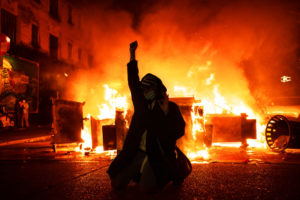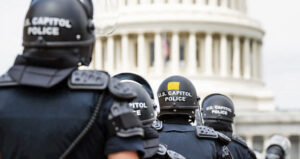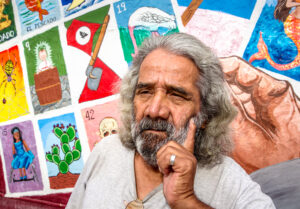New York has always been powered by immigration. Over the 20th century, it was the Irish who built the subways and the Greeks who ran the supermarkets; now, Colombians watch over our children and Bangladeshis drive the cabs. Yet in the past three years, something has gone wrong with the city’s approach to immigration. Gone are the days of immigrants flocking to take part in New York’s booming economy. Today, the only thing drawing potentially unlimited people to this stagnant city is the government’s promise of a “right to shelter”.
Six years ago, few would have cast the presence of illegal migrants as a crisis. Illegal immigrants came to New York to work; their workforce participation rate was nearly 78%, compared to 63% for legal migrants, and 65% for natural-born citizens. Immigrants made up more than one-third of New York’s construction workers and a quarter of dishwashers, cooks, maids, and housekeepers. The fact that illegal migrants weren’t allowed to work wasn’t an impediment: domestic workers and gardeners could ask the families who hired them to pay in cash, and large parts of the construction and restaurant industry weren’t too troubled about paying workers under the table. For this reason, while all immigrant children could go to school and get healthcare, adult illegal immigrants weren’t a drain on the social safety net: federal law made them ineligible for food stamps, public housing, and non-emergency healthcare.
Between 1980 and 2019, newcomers were fully aware of this, and quickly learned that, to blend in, they had to obey the law. The city wouldn’t ask anyone for their immigration status — but it would arrest and charge people for small crimes, from petty theft to dealing drugs. Nor would New York much put up with lower-level disorder, from smoking marijuana in parks to camping out in a subway station. This crackdown, which began in the early Nineties, resulted in a fall in major crimes from more than half a million incidents annually to fewer than 100,000 by 2019. Immigrants came to a safe city, and they understood their role in abiding by its laws.
Theoretically, newly arrived migrants were eligible for one city-funded benefit: the city’s unique “right to shelter”. In 1979, a lawsuit was brought against the city by advocates for homeless people, who charged that the state constitution, under a provision requiring care for the “needy”, guaranteed a right to adequate housing. The state’s high court never ruled on this “right”; instead, Mayor Edward I. Koch decided to settle it, agreeing that the city would shelter all adult men who were homeless by reason of “physical, mental or social dysfunction”.
Over the decades, further advocacy litigation spurred new city agreements that expanded the right to shelter. Yet no one in city government, the advocacy world, or the media can recall large numbers of newly arrived migrants showing up looking for city shelter. (Until last year, the city didn’t record the immigration status of homeless shelter residents.) Just as immigrants, whether legal or illegal, didn’t come to New York unless they had a job lined up, or the possibility of finding one, nor did they come unless they had housing lined up — usually a room or part of a room in a cut-up apartment building in the Bronx, Queens, or Brooklyn.
Today, this is no longer the case. The right-to-shelter safety net is now drawing hundreds of thousands of people to the city — many of whom have little chance of finding a job. New York is treating this new surge of migrants as a crisis, with Mayor Eric Adams repeatedly saying that uncontrolled migration will “destroy New York City”. But is this a fair analysis?
Let’s start with the numbers. It took New York nearly 40 years to absorb 500,000 unauthorised migrants into its private-sector economy. The city estimates that over the past year, 122,700 people, or a quarter of that previous total, have visited a city “intake centre”. (The city government calls these newcomers “asylum seekers”, but most have not applied for asylum, and most will not be eligible.)
And even this figure is likely an undercount. With more than six million “border encounters” between migrants and federal officials during the Biden administration, and with most people “encountered” immediately released into the country, it is highly likely that additional tens of thousands of newcomers have made their way to New York and simply disappeared somewhere.
The crisis began last spring when Texas Governor Greg Abbott, responding to the Biden administration’s open-border policy, bussed recent border-crossers north to highlight his own state’s woes; the aim was to build greater political support for a return to Trump-era restrictions. Adams, instead, tried to prove wrong Abbott’s insistence that the higher numbers were a problem. He began by setting up 17 “welcome centres” near key transit hubs, including the Port Authority Bus Terminal and Grand Central Terminal, to purposely invite new migrants to take advantage of New York’s on-demand shelter. The city also started to convert dozens of hotels, including prime Manhattan properties, into shelters.
Within a few months, a wave of new migrants had doubled the city’s shelter population. As of mid-October 2023, its taxpayers were housing more than 64,000 “asylum seekers”, in City Hall’s terminology, within a total shelter population of 116,700; in just one week in late September, 3,700 “asylum seekers” were registered. The Adams administration expects that sheltering these migrants will cost $12 billion over three years, more than the city spends on fire and sanitation services combined.
Yet it will be hard for many of these newcomers to find jobs. For the first time in four decades, New York City’s economy is not growing quickly. The city had a bad pandemic, and it is having a bad post-pandemic. New York has less than 1% more jobs than it had in 2019, compared to the nation’s overall 4% growth, the first time since the early Nineties that the city has lagged behind the nation.
There is no evidence that New York is in desperate need of tens of thousands of entry-level workers — despite the fact that certain industries prefer to keep wages as low as possible, so continue to complain about a labour shortage. The city is still missing 4%, or nearly 14,000, of its pre-Covid accommodation and food-service jobs. One sign of the shortage of jobs for new migrants is the huge number of people delivering food — historically a miserable, dangerous job, with pay less than minimum wage. (Higher pay standards only just took effect this month). If better under-the-table jobs in domestic work or restaurants were available, immigrants would not be doing deliveries.
For other reasons, too, New York is a very different city to the one it was before the pandemic. Migrants with no family or friends to help them settle in New York are landing in a city where crime and disorder are the norm, with rates of non-felony larceny already more than a quarter above 2019 figures. Illegal street vending goes unenforced, high-powered mopeds with no licence plates or insurance are driven on the sidewalk, and spending a night sitting on a curb in front of a Times Square migrant shelter blasting music and smoking pot is perfectly acceptable. You can’t blame migrants for noticing that they can get away with a lot of anti-social behaviour here; nobody is telling them to knock it off.
The result is that, despite the influx of migrants, New York has reversed its decades-long population increase, as its former residents decide to flee. Since 2020, the city has lost close to half a million people, rivalling only San Francisco in percentage loss. And what’s left behind? A city that is unable to absorb hundreds of thousands of ambitious immigrants into a growing economy, as it did between 1980 and 2019. Faced with this crisis, Adams maintains that the city’s “official position” is that “the borders should remain open”. The only thing he wants from Washington, it seems, is more money to fund the city’s shelters. But as residents start to protest, as crime rates continue to soar, Adams may find that, rather than empowering the strong city he is supposed to represent, immigration is only fuelling resentment.
Disclaimer
Some of the posts we share are controversial and we do not necessarily agree with them in the whole extend. Sometimes we agree with the content or part of it but we do not agree with the narration or language. Nevertheless we find them somehow interesting, valuable and/or informative or we share them, because we strongly believe in freedom of speech, free press and journalism. We strongly encourage you to have a critical approach to all the content, do your own research and analysis to build your own opinion.
We would be glad to have your feedback.
Source: UnHerd Read the original article here: https://unherd.com/




